Rhythm and blues, frequently abbreviated as R&B or R'n'B, is a genre of popular music that originated in African-American communities in the 1940s. The term was originally used by record companies to describe recordings marketed predominantly to urban African Americans, at a time when "urbane, rocking, jazz based music ... [with a] heavy, insistent beat" was becoming more popular. In the commercial rhythm and blues music typical of the 1950s through the 1970s, the bands usually consisted of piano, one or two guitars, bass, drums, one or more saxophones, and sometimes background vocalists. R&B lyrical themes often encapsulate the African-American experience of pain and the quest for freedom and joy, as well as triumphs and failures in terms of relationships, economics, and aspirations.

Atlantic Recording Corporation is an American record label founded in October 1947 by Ahmet Ertegun and Herb Abramson. Over its first 20 years of operation, Atlantic earned a reputation as one of the most important American labels, specializing in jazz, R&B, and soul by Aretha Franklin, Ray Charles, Wilson Pickett, Sam and Dave, Ruth Brown and Otis Redding. Its position was greatly improved by its distribution deal with Stax. In 1967, Atlantic became a wholly owned subsidiary of Warner Bros.-Seven Arts, now the Warner Music Group, and expanded into rock and pop music with releases by Crosby, Stills, Nash & Young, Led Zeppelin, and Yes.

Blue Note Records is an American jazz record label owned by Universal Music Group and operated under Capitol Music Group. Established in 1939 by Alfred Lion and Max Margulis, it derived its name from the blue notes of jazz and the blues. Originally dedicated to recording traditional jazz and small group swing, the label began to switch its attention to modern jazz around 1947. From there, Blue Note grew to become one of the most prolific, influential and respected jazz labels of the mid-20th century, noted for its role in facilitating the development of hard bop, post-bop and avant-garde jazz, as well as for its iconic modernist art direction.

Lester William Polsfuss, known as Les Paul, was an American jazz, country, and blues guitarist, songwriter, luthier, and inventor. He was one of the pioneers of the solid-body electric guitar, and his prototype, called the Log, served as inspiration for the Gibson Les Paul. Paul taught himself how to play guitar, and while he is mainly known for jazz and popular music, he had an early career in country music. In the 1950s, he and his wife, singer and guitarist Mary Ford, recorded numerous records, selling millions of copies.
Gordon Hill Jenkins was an American arranger, composer, and pianist who was influential in popular music in the 1940s and 1950s. Jenkins worked with The Andrews Sisters, Johnny Cash, The Weavers, Frank Sinatra, Louis Armstrong, Judy Garland, Nat King Cole, Billie Holiday, Harry Nilsson, Peggy Lee and Ella Fitzgerald.

Albert George Hibbler was an American baritone vocalist, who sang with Duke Ellington's orchestra before having several pop hits as a solo artist. Some of Hibbler's singing is classified as rhythm and blues, but he is best seen as a bridge between R&B and traditional pop music. According to one authority, "Hibbler cannot be regarded as a jazz singer but as an exceptionally good interpreter of twentieth-century popular songs who happened to work with some of the best jazz musicians of the time."
J. Lawrence Cook was the most prolific piano roll artist in history. His output has been estimated at between 10,000 and 20,000 different roll recordings.
Walt Disney Records is an American record label of the Disney Music Group. The label releases soundtrack albums from Disney's motion picture studios, television series, theme parks, and traditional studio albums produced by its roster of pop, teen pop, and country artists.
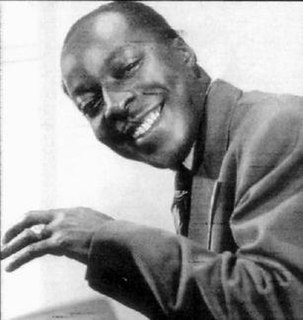
Cecil Gant was an American blues singer, songwriter and pianist, whose recordings of both ballads and "fiery piano rockers" were successful in the mid- and late 1940s, and influenced the early development of rock and roll. His biggest hit was the 1944 ballad, "I Wonder".
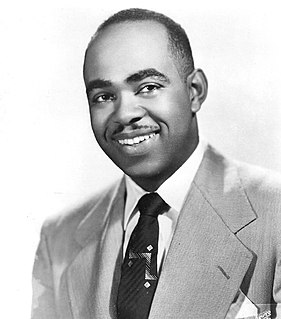
Wild Bill Davis was the stage name of American jazz pianist, organist, and arranger William Strethen Davis. He is best known for his pioneering jazz electronic organ recordings and for his tenure with the Tympany Five, the backing group for Louis Jordan. Prior to the emergence of Jimmy Smith in 1956, Davis was the pacesetter among organists.
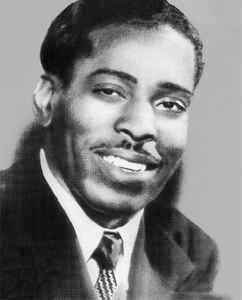
Roy Theodore Hawkins was an American blues singer, pianist, and songwriter. After working in clubs, he broke through with his 1950 song "Why Do Things Happen to Me" inspired by an auto accident which paralyzed his right arm. Several of his songs, most notably "The Thrill Is Gone", were covered by later artists, including Ray Charles, B.B. King, and James Brown.
Connie Curtis Crayton, known as Pee Wee Crayton, was an American R&B and blues guitarist and singer.
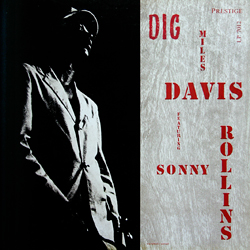
Dig is an album by Miles Davis on Prestige Records, catalogue number 7012. It features tracks from a 1951 session at Apex Studios. First released in the 12-inch LP format in 1956, The original album was later released as Diggin' with the catalogue number PR 7281 and a different cover. Dig was reissued as a compact disc with additional tracks.
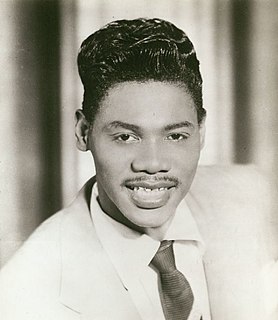
William Wright was an American jump blues singer. He is considered one of Little Richard's greatest influences in his formative years.
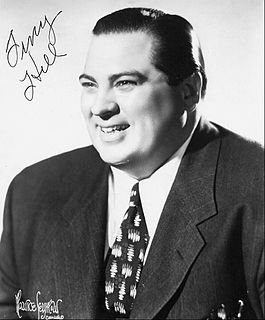
Harry Lawrence "Tiny" Hill was an American band leader of the Big Band era. During the height of his career Hill was billed as “America’s Biggest Bandleader” because of his weight of over 365 lb (166 kg). His signature song was "Angry", which he first recorded in 1939 on Columbia Records' Vocalion label. He used sandpaper blocks and a güiro to generate a double shuffle "beat that makes the listener itch to dance".
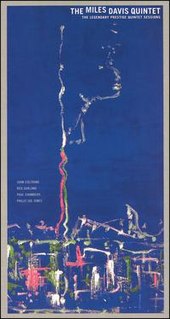
The Legendary Prestige Quintet Sessions is a four compact disc box set of recordings by the Miles Davis Quintet released in 2006 by the Concord Music Group. It collates on three discs the entire set of recordings that made up the Prestige Records albums released from 1956 through 1961 — Miles, Cookin', Relaxin', Workin', and Steamin'. The track "'Round Midnight" was released on the album Miles Davis and the Modern Jazz Giants. The fourth disc contains live material from a television broadcast and in jazz club settings. It peaked at #15 on the Billboard jazz album chart, and was reissued on December 2, 2016, in a smaller compact disc brick packaging.
Rita Moss was an American jazz and ballad singer, notable for her four-octave vocal range. Although she took piano lessons as a child, she was a mostly self-taught multi-instrumentalist who could play piano, organ and drums. She was born in Cabin Creek, Kanawha, West Virginia and grew up in Long Island, New York. She credited the discovery of her vocal range to singing along to saxophonist Freddy Gardner's recording of "Body and Soul", a record she had turned up in a Manhattan store's bargain bin.
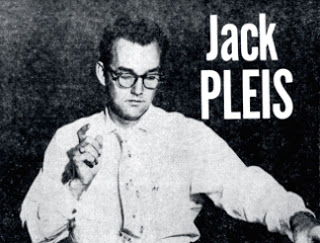
Jack K. Pleis was an American jazz pianist, arranger, conductor, composer and producer. He recorded on London and Decca Records in the 1950s, and Columbia Records in the 1960s. During the course of his career, Pleis worked with many artists, including Louis Armstrong, Harry Belafonte, Bing Crosby, Sammy Davis Jr., Benny Goodman, Earl Grant, Brenda Lee, and Joe Williams. Between 1950 and 1976, over 150 songs were arranged by Pleis. His surname is pronounced "Pleece".
The Castle Jazz Band was a Dixieland jazz band, part of the "West Coast revival" of traditional jazz music. Their recordings were popular worldwide for a time, although touring outside their Portland, Oregon base was limited.

The Brothers is a studio compilation album by American saxophonists Stan Getz and Zoot Sims released in 1956 via Prestige label.













